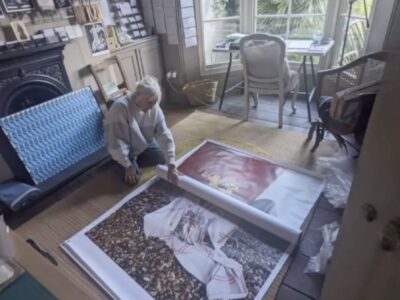We all need to know other creatives.
It reassures us that we’re not alone, in our struggles. It makes us feel less weird, less isolated, and the obstacles are easier to overcome when we see that they are a normal part of the creative journey.
I first came across John Hendrix in the form of the illustration above. It was such an accurate map of my process that I bought a print of it from his website.
It now hangs on the wall beside my desk, a constant reminder that though big projects like books can be lonely and hard, they’re also quite predictable. There’s always a pit of despair, and it takes time, patience and perseverance to get past it.
We just need to trust that we know the way, that we’re often further along than we think, and keep going till we’re done.
Now Hendrix has a new book out, The Mythmakers.
I wanted to mention it here because it is rather beautiful, weaving together the comic-strip format of a graphic novel with more conventional text; mixing straight factual story-telling with more fantastical elements showing why we need stories at all.
More importantly for us, it’s about creative companionship, and the value of friends and mentors as we wade through those despair-pits. We might work alone, but we don’t have to be lonely.
It’s a book about faith, and friendship.
The Mythmakers tells the true story of two men, traumatised from their experiences in the trenches in World War 1. One was from Belfast. The other from Birmingham.
Both ended up as academics in Oxford, where they bonded over a shared love of Norse myth and a determination to create new myths and stories – a desperately unfashionable notion at the time, and certainly not something an Oxford don was meant to be interested in.
Theirs was a friendship that spanned decades.
The two men met twice a week, slowly gathering a group of like-minded souls around their lunchtime drinks at the The Eagle & Child pub, and their more serious Thursday night meetings in rooms at Magdalen college.
Here, they would read out their fiction for the group. They encouraged each other, though they were often fiercely competitive, and sometimes harshly critical. All the group’s regulars became better writers as a result, many of them having distinguished literary careers.
The group was called The Inklings
The two founding members were to write novels that are still loved today, inventing a whole new genre of fiction.
Without them, it’s doubtful we’d have the Harry Potter series, Game of Thrones, or fantasy games like Dungeons & Dragons.
Their names? CS Lewis and JRR Tolkien.
For nearly 20 years, The Inklings encouraged and critiqued each others’ work. They bantered, argued, discussed, debated ideas – and also frequently disagreed.
Without their weekly meetings, it is doubtful that The Hobbit would ever have been finished, let alone the Lord of The Rings trilogy. Tolkien was a slow writer who got lost in the worlds he’d created.
They needed the support of their creative community.
Tolkien’s first book, The Hobbit, was only published because someone from his wider network – a student – got hold of a typewritten manuscript and took it to a publisher. No one expected success; the first edition was just 1500 copies. Yet the book has never been out of print since.
Lewis, meanwhile, only wrote his early novels after a bet with Tolkien. His most lasting work, the seven novels of The Chronicles of Narnia, also owes its existence to a student who read an early draft and encouraged Lewis to finish it. By then, The Inklings were falling apart, and Tolkien had been disparaging of the idea of Lewis writing children’s books.
My point here?
Even if you do your work alone, it’s important to find the others. The people like you.
Interested and interesting people who will inspire, encourage, challenge you. Someone to compete with, to push you as you inch towards the finish line and get your work out there.
We also need a wider network of fans, critics, friends who will critique our early drafts of a project and help us get it into the world. Lewis and Tolkien had their students, as well as The Inklings.
Share your process.
Finally, we need to learn to be vulnerable, to share our ideas, sketchbooks and drafts before they’re polished and ready – because that’s how we build an audience, a network, how we become better at what we do – and become more visible while we do it.
Lewis and Tollers did this with The Inklings, and with some of their students.
John Hendrix does that here.
Austin Kleon also shares pages from his notebooks, in his daily blog.
Now over to you.
Where is your creative community? And if you don’t yet have one, where can you start looking?
And what could you share, today, from your work in progress?







What do you think?